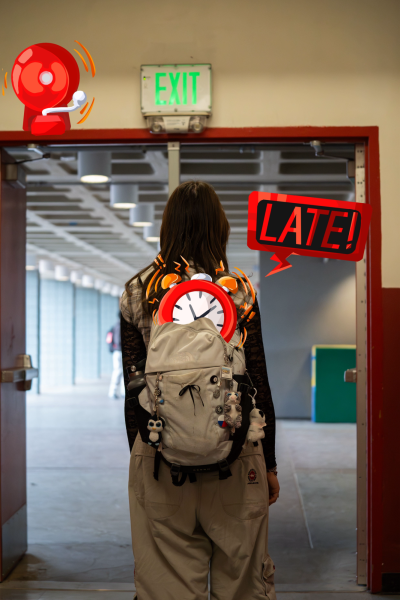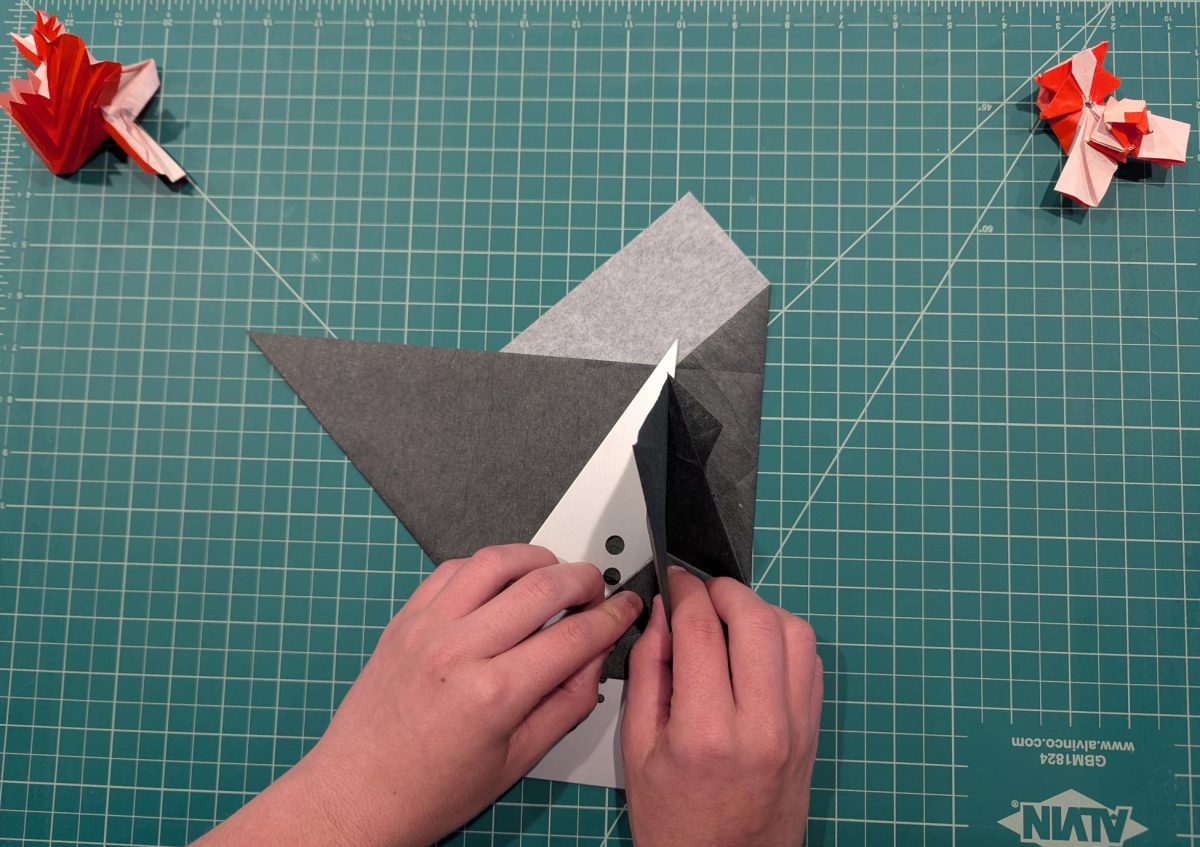
“You’re late! That’s three points deducted from your grade!” my science teacher yelled at me from across the room. For every minute a student was late, they lost a participation point. Out of breath, I collapsed into my seat, frustrated. Navigating Lowell’s large campus with just five minutes to get to class is nearly impossible, especially when rushing between locations that are far apart, like the World Language building and the math wing. With around 3,000 people on campus each day, creating traffic in the hallways, arriving on time to class is a daily struggle.
Passing periods should be extended to ten minutes to ensure that students can get to class on time while still being able to take care of necessary tasks like using the restroom or preparing for the next class.
Some might argue that longer passing periods would cut into class time and fail to meet the state’s required amount of instructional hours. However, according to the National Center of Education Statistics, California high schools are required to have a minimum of 1,080 instructional hours. When accounting for rallies, testing schedules, breaks, and holidays, Lowell has approximately 1,134 instructional hours — 54 more than are required. This surplus allows for extended passing periods while still meeting state requirements. Furthermore, Sacred Heart Cathedral Preparatory has eight periods with ten-minute passing periods and still fulfills the instructional hour requirement. Lowell could adopt similar adjustments by slightly extending school hours or reallocating time from registry. These changes would allow both students and teachers to prepare for their next class, enhancing their well-being and creating a more productive learning environment.
The constant worry about being tardy can create stress and affect students’ academic abilities. It’s common to see students rushing to their next class for several minutes after the bell rings. According to the National Library of Medicine, walking at a fast pace increases heart rate and triggers the release of stress hormones, leading to heightened stress levels. When students arrive late, their entrance disrupts the class, creating an awkward environment for both the teacher and their peers. Students who arrive stressed and flustered may find it difficult to focus on their schoolwork or fully engage with the lesson. This stress can negatively impact their academic performance, potentially resulting in lower test scores or even missing exams, especially when teachers lock the doors as soon as the bell rings.
Another important benefit of longer passing periods is that students are able to use the restroom. Considering the time it takes to wait in line, use the restroom, and wash one’s hands, a typical restroom break can easily exceed five minutes’ time, the length of the current passing period. As a result, students aren’t able to use the restroom until they arrive at class. And then, there is no guarantee the teacher will allow them to leave. Even if they are permitted to go, asking the teacher to use the restroom interrupts the class, and they might miss crucial information from lessons. Otherwise, those who attempt to use the restroom during passing periods frequently find themselves late to class. This problem could be avoided entirely if students had enough time to use the restroom during passing periods.
Additionally, students have more opportunities and time to use their lockers if passing periods are lengthened, reducing the need to carry a heavy backpack. With classes scattered across campus, many students avoid using their lockers in fear of being marked tardy. It takes time to enter the combination for locks and search for what they need. As a result, students end up carrying everything in their backpacks. According to Nemours KidsHealth, carrying heavy backpacks can strain muscles and joints, leading to back pain. Doctors and physical therapists recommend that no more than 10-20 percent of one’s body weight should be carried. However, with books, school supplies, and personal items, backpacks can easily exceed this limit, causing significant strain on students’ shoulders, neck and back. This pain could have long-term effects on students’ physical health. With longer passing periods, students will be able to put these items into their lockers, allowing them to carry less weight.
Extended passing periods also allow students to interact with their friends and peers, which has a direct benefit on mental well-being. Because of the different schedules students have due to different teachers and courses, many students rarely get to see their friends during the day. With a longer passing period, students would be able to spend more time with their friends. Allowing students to socialize with their peers can help them build stronger relationships with their classmates and create a greater sense of community at school. According to BMC Psychology, peer relationships significantly influence motivation and learning, providing support, encouragement, and a sense of belonging. This results in a positive impact on a student’s academic performance.
Longer passing periods benefit not only students, but teachers as well. They would allow teachers to have more time to prepare for their classes and organize their materials and lesson plans, helping students learn more effectively. Teachers would also have more time to interact with students, helping those who are struggling to keep up with class by answering their questions, providing extra support, or simply getting to know them better. This would create stronger relationships between teachers and students, leading to a more positive learning environment.
Extending passing periods is a simple yet impactful change that can create a more supportive and productive environment for both students and teachers. With the additional time between classes, students can arrive to class on time, use the restroom, strengthen social connections, and reduce backpack strain, while teachers would gain time to manage their responsibilities and support students. By making this change, Lowell can promote better health, reduce stress, and create a more engaging learning environment for everyone. It’s a change that benefits the entire school community — a change that is worth pursuing.







